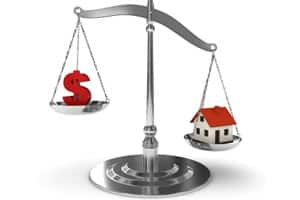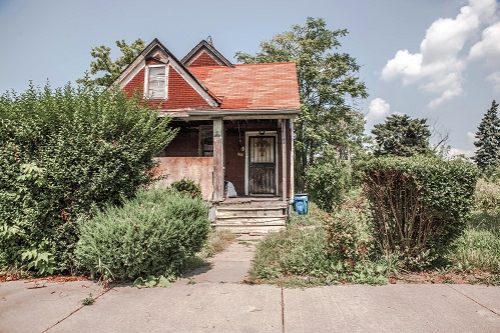- How much homeowners insurance do I need for mortgage?
- What type of homeowners insurance do mortgage companies require?
- Why do mortgage lenders require homeowners insurance?
- Is homeowners insurance included in the mortgage?
- When does the lender require you to purchase a homeowners insurance policy?
- Is homeowners insurance required on all mortgage loans?
- What does home insurance cover?
- What else doe mortgagees require on your insurance policy?
- Is homeowners insurance always a requirement?
How much homeowners insurance do I need for mortgage?
While it is difficult to put an exact dollar amount on the required insurance amount since every home is different there are some parameters that lenders require. In most cases, your lender will detail the required coverage in your loan agreement.
Mortgage lender requirements can vary by lender and location of the home but almost all lenders will require that your home is insured for 100% of its replacement cost. They want to make sure the home can be completely rebuilt in the event it is destroyed.
“Most lenders allow buyers to shop around for their own home insurance, without many stipulations as far as coverages are required. The main thing lenders are concerned about is the RCE (Replacement Cost Estimator) which is a tool home insurance companies use to calculate the cost to rebuild the home if it were to completely be destroyed,” says Lauren McKenzie, an agent at A Plus Insurance in Liberty, SC.
Your insurance company will provide an estimate of coverages, and this will usually more than meet the lender requirements for homeowners insurance policy.
What type of homeowners insurance do mortgage companies require?
Home insurance requirements for mortgage depend on the location, building codes, type of home, etc. Mortgage lenders’ primary concern is that your home insurance protects against anything that can damage or destroy the house. This often includes hazard insurance, which covers damages to the dwelling and other structures. The lender cares about the home, but doesn’t take into account the land, your belongings or other buildings on the property.
Mortgage lenders usually base the required level of dwelling coverage on square footage, local building cost data, type of home, and may even use purchase price as a factor, as provided by the insurance company. They want to make sure that your home is fully covered so that if it’s damaged, it can be replaced back to its current state and value.
In some cases, the minimum home insurance for a mortgage a lender may require you to carry is enough insurance to pay off the balance of your loan. As an example, if you paid $300,000 for your home with a $60,000 down payment, your lender may only require you to carry $240,000 in insurance.
While this works fine for your lender (they will be made whole) if your home is destroyed, you may not have enough insurance to actually rebuild your home. Most insurance experts recommend carrying enough coverage to completely rebuild your home.
Mortgage lenders also require liability insurance. Liability insurance protects you if you’re sued or someone is injured in your home or on your property. Since your house is likely your most valuable asset, a plaintiff may go after your home. Your mortgage company has a stake in that asset, which is why they require at least a minimum level of liability coverage, which starts at $100,000.
Once the homeowners policy is in place, your mortgage lender likely won’t require changes to the policy amount unless you add square footage or do a major renovation which would up the cost to repair or rebuild your home.
If at some point over the years you end up taking out a second mortgage on your home, you will likely face less stringent requirements for homeowners insurance. The second mortgage lender has a smaller investment in your home and will assume you already have the required coverage from your first mortgage.
Which perils are required to be covered?
Your lender will most likely require that the dwelling portion of your policy protects against the following perils:
- Fire and lightning
- Damage from wind and hail
- Theft and vandalism
- Falling objects
- Damage from weight of snow, ice, or sleet
- Frozen pipes
- Vehicles
- Riots or civil unrest
- Smoke damage
- Explosions
Additionally, your policy may also cover personal belongings against these perils.
If your policy excludes any of the listed perils for any reason, there is a good chance your lender will require you to find a separate policy to fill that coverage gap.
Why do mortgage lenders require homeowners insurance?
Mortgage lenders want you to protect your house in case there are catastrophic losses. Often, the insurance payments are managed through an escrow account set up by the lender. They lent you money so you could buy your home and they still own a piece of it. Additionally, personal liability coverage is crucial as it safeguards against potential legal defense costs and liability claims. They want to make sure you get enough protection so they won’t lose out if your home is destroyed.
Homeowners without a mortgage don’t need home insurance. This is different from auto insurance, which nearly every state requires.
That said, it’s still a wise decision to have coverage, so your most valuable asset is protected.
How much home insurance do I need?
You need enough home insurance to rebuild your home if it was completely destroyed. Your mortgage company will provide you with the amount of coverage it requires. You can usually meet this requirement with a lower dwelling coverage if you add an extended replacement cost endorsement to your home insurance coverage.
Is homeowners insurance included in the mortgage?
While it may seem like it’s included, it isn’t. Your mortgage and homeowners insurance are two separate items. Often, your monthly mortgage payment also covers your homeowners insurance premium because your lender has set up an escrow account that handles your mortgage payment, property taxes, and insurance policy.
Despite the fact that you may only make one monthly mortgage payment, that money is split up between your mortgage lender, property taxes, and your homeowners insurance company.
When does the lender require you to purchase a homeowners insurance policy?
Your lender will give you enough time to purchase a homeowners insurance policy before closing on your home so you can shop around.
You won’t be able to close if you don’t have proof of homeowners insurance. Your lender or mortgage broker will let you know what the exact deadline is for providing that proof, but the sooner you start shopping for a policy, the better. Starting right away gives you time to find a policy that meets the homeowners insurance requirements for the mortgage and suits your budget from a reputable insurance company.
Is homeowners insurance required on all mortgage loans?
If you have a mortgage on your home, your lender will require that you have homeowners insurance in place. This is to protect their investment. They want to make sure your home can be rebuilt or repaired in the event it is damaged or destroyed. Your lender should notify you of their homeowners insurance mortgage requirements prior to closing so you can get an insurance policy in place.
Homeowners insurance is required for as long as you have a loan. Once you own your home outright, you are not required to carry homeowners insurance.
What does home insurance cover?
Home insurance covers damage that's caused by fire, hail, lightning, vandalism and other covered perils.
Now, let's walk through the different types of coverage in a home insurance policy:
- Dwelling: This pays you to rebuild or repair your home if it's damaged by a covered cause of loss, such as a fire.
- Personal property: This covers what's in your house, such as furniture, clothes and electronics.
- Loss of use: This helps pay your additional living expenses if you need to leave your house after it's damaged and while it's being fixed.
- Liability: This covers you if you're sued or receive a claim against you or a member of your household. This could be because of causing bodily injury or property damage outside your property or if someone is injured on your property.
- Other structures: This covers detached structures, such as garages, fences and sheds.
What other insurance do mortgage companies require?
A mortgage lender may require additional coverage if your home is considered a risk. As an example, if your home is located in a flood zone or in an earthquake-prone area you may have to put flood or earthquake insurance in place. Here are a few common additional coverages a lender may require:
Flood insurance: Standard homeowners insurance does not protect against flood or earthquake damage, but if you live in a flood zone, your mortgage company will likely require that coverage. Flood insurance policies can be purchased through the National Flood Insurance Program (NFIP) or a private insurance company. The cost of a policy varies dramatically depending on your properties risk factors. According to data from FEMA, the average cost of flood insurance is about $700 a year but that figure can go up dramatically if you live oceanfront or on the coast.
Windstorm insurance: While wind damage is covered by most insurance policies, there are insurers in certain areas (usually coastal or high risk for tornadoes) that may exclude wind damage from a standard policy. If this is the case, you will have to purchase an additional windstorm policy that would fill this coverage gap. Windstorm policies almost always come with a percentage deductible.
Earthquake insurance: If your home is in an earthquake-prone area, your lender may require that you carry earthquake insurance. This is usually an added endorsement on your homeowner policy or can be a standalone policy. Earthquake insurance usually comes with a percentage deductible that ranges from 5% to 25%.
Additional endorsements: Your lender may require one or more additional endorsements to your insurance policy. A common request is water backup coverage which helps protect your home from water damage due to overflowing sewers or drains.
What else doe mortgagees require on your insurance policy?
In addition to specific coverage levels, your lender will likely require the following:
- Lender named as a loss payee: The lender will require that they are named as a loss payee on the policy. Basically, this means that if you file a claim due to a loss or damage, the check from your insurance company is made out to both your mortgage company and you. This ensures that the money will be used to repair or rebuild the home, protecting the lenders investment in your home.
- Mortgagee clause: This clause requires your insurance company to give your lender 30 days written notice before they can cancel your coverage.
- Deductible amount: Your lender may require that the deductible not exceed a certain dollar amount or percentage to ensure you will be able to pay it.
- Proof of coverage: You will need to provide proof of insurance policy coverage at your closing so make sure you do not wait until the last minute to find a policy.
Depending on your situation, you may also be required to carry mortgage insurance. As a general rule, you have to have mortgage insurance if you have less than 20% equity in your home. Homeowners insurance vs. mortgage insurance is very different.
Is homeowners insurance always a requirement?
Home insurance isn't mandatory if you have already paid off your house. However, that doesn't mean you should drop coverage as soon as you pay off your mortgage. Your home is likely your biggest asset, and unless you can easily afford to rebuild it, you should be carrying insurance.
One of the best ways to lower your homeowners insurance premium is to shop around. Be sure to get quotes from multiple home insurance companies; most experts recommend getting at quotes from at least five different insurers. Make sure you are comparing apples to apples when it comes to coverage levels and deductibles. Finally, check into the company's reputation and read consumer reviews. An excellent place to start is checking out our rankings of the best home insurance companies.





